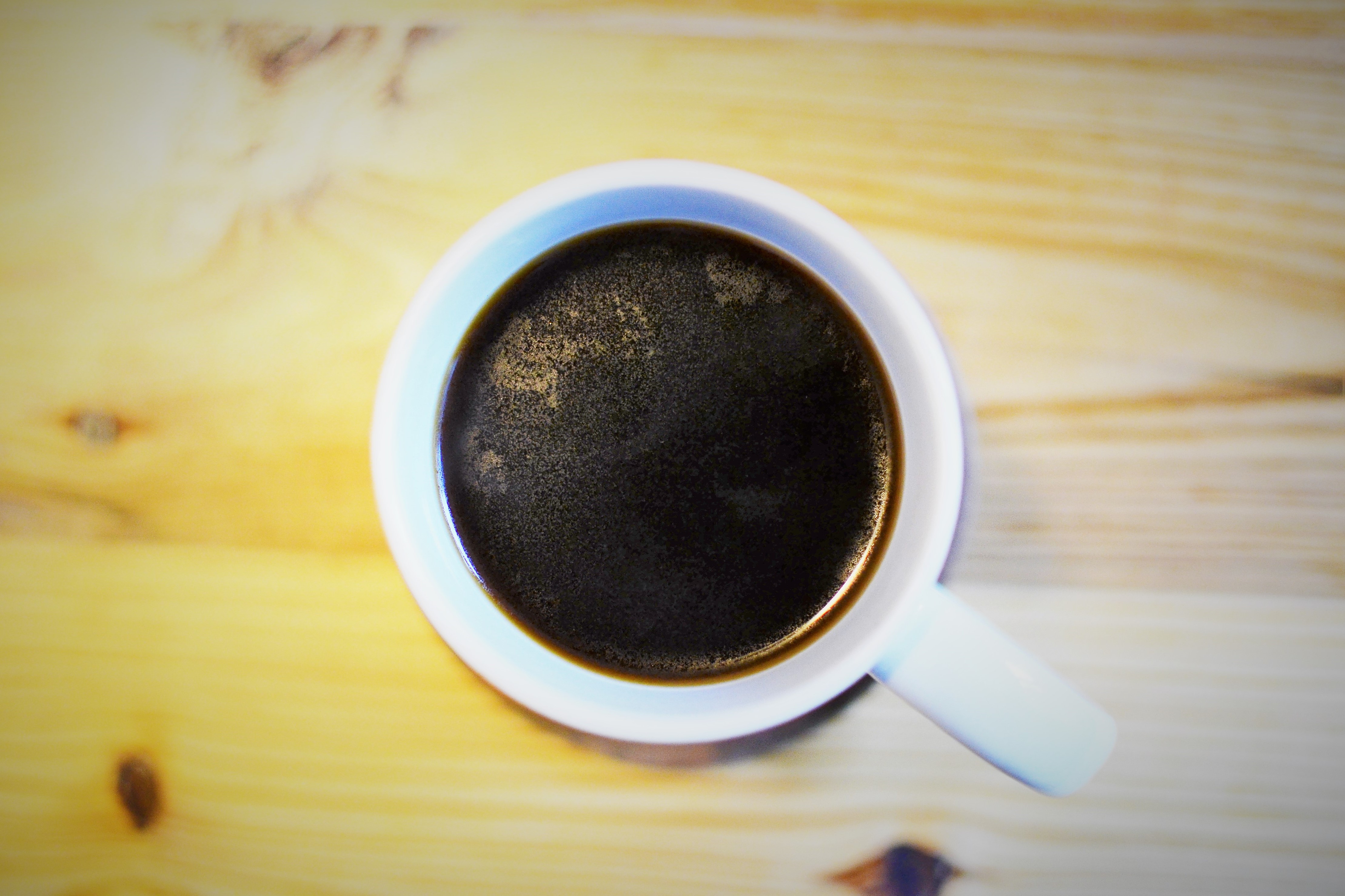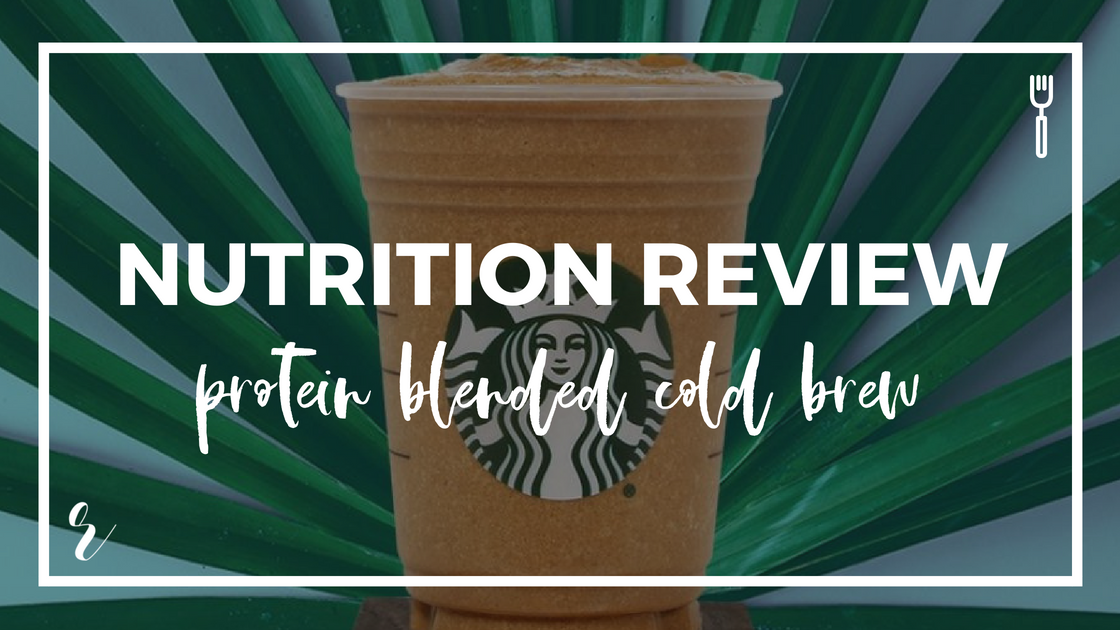Starbucks recently released their new Almond Protein Blended Cold Brew and Cacao Protein Blended Cold Brew. Each drink has an optional base of almond milk, coconut milk, nonfat milk, whole milk, 2% milk and soy milk (USA only). The Almond drink defaults to almond milk and the Cacao drink defaults to coconut milk. Here’s the big question: is the sugar-sweetened powerhouse brand capable of producing a healthy protein shake? Let’s take a look.
Not vegan? Read our cow’s milk nutrition review to up your knowledge. Or check out how almond, coconut, oat, hemp, soy, rice, goat’s milk, cow’s milk and breastmilk compare.
The ingredients.
What are the ingredients? Pretty simple. Almond drink: ice, slightly sweetened almond milk, coffee, a banana / date / apple juice / coconut sugar blend, plant protein blend and a hint of almond butter. Cacao drink: ice, sweetened coconut milk, coffee, the same banana / date / apple juice / coconut sugar blend, plant protein blend and a chocolate blend sweetened with coconut sugar.
Where does the protein come from? Peas and brown rice. Two quality plant-based supplemental protein options on the market. If you’re interested in upping your plant-based nutrition game, check out The 5 Most Important Tips.

Nutrition details.
The nutrition facts per a 16 ounce “grande” sized protein drink? See for yourself.
- Almond drink: 270 calories, 12 grams of fat, 30 grams of carbs including 4 grams of fiber + 22 grams of sugar, 12 grams of protein, and 180 mg of caffeine.
- Cacao drink: 250 calories, 9 grams of fat, 36 grams of carbs including 5 grams of fiber + 26 grams of sugar, 10 grams of protein, and 180 mg of caffeine.
Calories.
High in calories? Middle of the road. Compared to the average 2,000 calorie diet, 250 is 1/8th. A substantial snack or part of your plant-based meal. If you’ve already reached your calorie goal for the day to maintain weight, an extra 250 calories per day for a week straight will gain you a half a pound. It matters more where the calories are coming from.
Fat.
High in fat? Definitely. Some of the fat is from the almond milk (according to their nutrition label – not sure how this is possible) and coconut milk (coconut cream), lesser from the palm oil in the fruit blend, and a hint from the almond butter. The cleanest fats on the planet? All but the palm oil. And fat can actually help you lose weight by keeping you full and satisfied longer than a nonfat alternative. Unless you consume too many fats, which equals a ton of extra calories your body doesn’t need. To put it into perspective with a 2,000 calorie diet, the dietary reference intake (DRI) is between 44 and 77 grams of fat.
Sugar.
High in sugar? Yep. 22 and 26 grams are no joke. Even if some of it comes from added coconut sugar which may have a lower glycemic index than granulated white sugar, it’s still sugar. But not nearly as outrageous of the 53 grams of sugar in their White Chocolate Mocha Latte. In terms of carbs, about 2/3 of them are coming from sugar. Totally expected with fruit, but not awesome when “natural” processed sugar is dumped on top of it. The World Health Organization recommends no more than 25 grams of added sugar per day. 22 to 26 grams would nix that amount immediately.

Fiber.
High in fiber? Surprisingly, yes! 4-5 grams is a big deal considering all the other drink options at the ‘Bucks. Fiber offer satiety (feeling fuller longer), takes longer to digest yielding less of a blood sugar spike, and binds to your ingested cholesterol before it can creep into your bloodstream. The recommended dietary allowance (RDA) is 25 grams per day for females and 38 for males. 4 or 5 g is a fantastic start.
Protein.
High in protein? For a drink, I’d say so. 10-12 grams is on the high end of all drinks, and on par with blended protein drinks. Not the 20-40 grams of protein you’d expect from a straight protein shake, but fueling up post-workout probably isn’t your motivation in reading this review. The RDA for protein is 56 g per day for men and 46 g for women. Similar to fats, protein will satiate without the excessive blood glucose rise and fall that comes with too many carbs, especially sugars.
Caffeine.
High in caffeine? In general, yes. Green tea has about 30 mg and black tea about 50 mg. 180 mg will offer the jolt you’re aching for. Compared to their drip coffee? A grande Pike Place (hot) brewed coffee comes in at a whopping 310 mg of caffeine. Enough to offer a few friendly heart palpitations on an empty stomach. The Mayo Clinic recommends no more than 400 mg caffeine per day. Side effects include: headaches, trouble sleeping, mood changes, faster heartbeat and the list goes on.

The takeaway.
Healthy overall? I’d give it a 6 or 7 out of 10. Plenty of real food ingredients, some quality plant protein, fiber, and majority healthy fats. On the flip-side, a handful of fillers (5-7 emulsifiers / thickeners with one repeated) and a little too much cane and coconut sugar. I’d actively recommend it IF the sugars were replaced with stevia & monk fruit extract, and all the gums & lecithins were replaced with water-diluted coconut cream & pure almond milk.
So what’s your vibe? Nutritiously sound or not?



